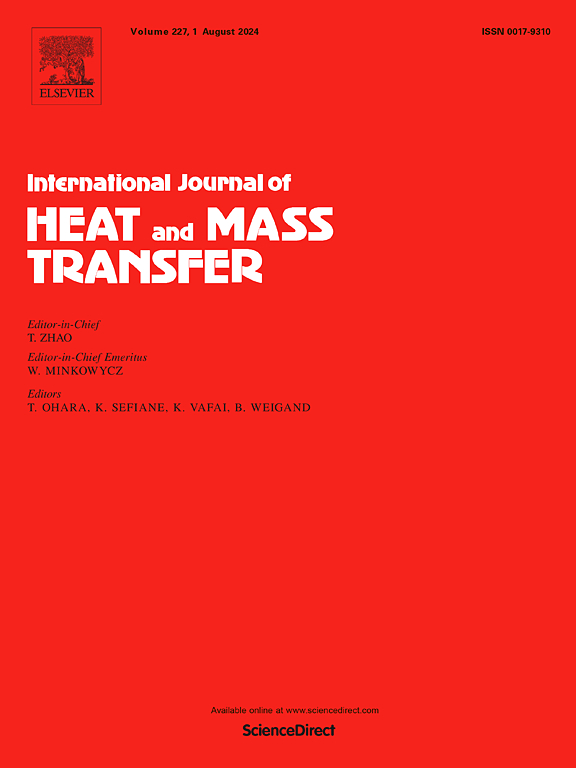Research on the modulation of GaN/AlN superlattice thermal transport by phonon wave effects
IF 5
2区 工程技术
Q1 ENGINEERING, MECHANICAL
International Journal of Heat and Mass Transfer
Pub Date : 2025-02-24
DOI:10.1016/j.ijheatmasstransfer.2025.126760
引用次数: 0
Abstract
The high integration and miniaturization of semiconductor devices have led to characteristic lengths comparable to the wavelength of phonons. Coherent phonons play a significant role in the thermal management of devices. The controllability of the secondary periodicity in superlattice structures offers a pathway for manipulating phonon waves. In this work, the phonon wave heat conduction in GaN/AlN superlattice is investigated using the transfer matrix method. By constructing the phonon dispersion and transmission of the superlattice, the effects of phonon tunneling, non-reciprocity, and resonance on thermal transport are analyzed based on the consideration of the acoustic wave propagation. It is found that the secondary periodicity of the superlattice introduces band gaps at the center and edges of the Brillouin zone in the dispersion, leading to a rapid decrease in phonon transmissivity and the formation of stop bands. The phonon transport in the superlattice is promoted with the increase of interface density due to the enhancement of phonon tunneling effect and phonon group velocity. Furthermore, the phonon non-reciprocal and resonant effects are also found to effectively regulate the thermal transport in the superlattice. The amplitude of elastic waves in superlattice exhibits non-reciprocal effects, allowing for the lossless transmission of topologically protected phonons. Besides, the phonon resonance enables the transmissivity of phonon within the stop band approaching 1 for multi-superlattice systems. This work provides valuable insights into the changes in thermal conductivity of superlattice structures and offers theoretical guidance for the design of semiconductor devices and the manipulation of phonons.
求助全文
约1分钟内获得全文
求助全文
来源期刊
CiteScore
10.30
自引率
13.50%
发文量
1319
审稿时长
41 days
期刊介绍:
International Journal of Heat and Mass Transfer is the vehicle for the exchange of basic ideas in heat and mass transfer between research workers and engineers throughout the world. It focuses on both analytical and experimental research, with an emphasis on contributions which increase the basic understanding of transfer processes and their application to engineering problems.
Topics include:
-New methods of measuring and/or correlating transport-property data
-Energy engineering
-Environmental applications of heat and/or mass transfer

 求助内容:
求助内容: 应助结果提醒方式:
应助结果提醒方式:


